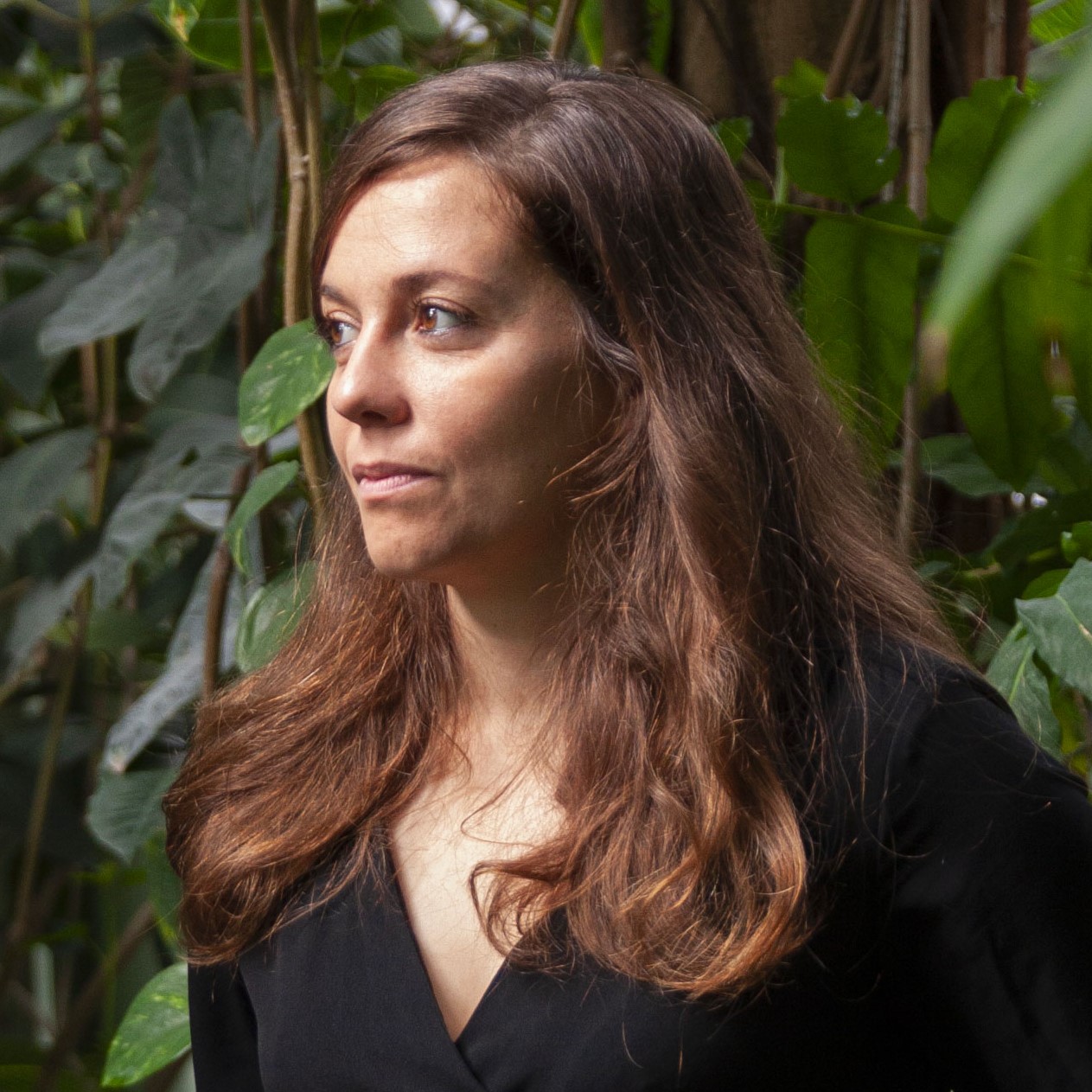ALMUDENA ROMERO
The Museum of Plant Art
In 2023, Almudena Romero is the renowned photographer of the 1+2 Residence in Toulouse. For her project « The Museum of Plant Art », the artist is collaborating with le laboratoire interactions plantes-microorganismes (LIPME – CNRS/INRAE – Institut national de recherche pour l’agriculture, l’alimentation et l’environnement). She develops a reflection on our understanding of plants through the use of scientific tools and multiple conversations with scientists, philosophers and art historians.
Socio-ecological concerns are at the center of “The Museum of Plant Art”. A singular corpus that does not aim to aestheticize Nature but rather to open up a political exploration of plants as creators of artistic experiences in their own right. At the Chapelle des Cordeliers in Toulouse, Almudena Romero offers an immersive and unique exhibition. She recreates certain elements of flower-pollinator interactions and thus invites the public to confront their experience as spectators with those of pollinators in relation to flowers.
Almudena Romero (Madrid, 1986) is a visual artist who uses the medium of photography to explore the meanings and understandings of Humankind and other species. Her reflections focus on how perception affects existence and how art shapes our perception of reality. The artist focuses on ecology and sustainability concerns, often involving photographic processes inherent to plants such as photosynthesis.
Her work has been presented in numerous solo exhibitions at Rencontres d’Arles (2021) and Paris Photo (2021), and in international institutions such as the Victoria & Albert Museum (UK), National Portrait Gallery (UK), Tate Modern-Tate Exchange (UK), The Photographers’ Gallery (UK), Tsinghua Art Museum (CH) and Le Centquatre in Paris (FR).
Putting an end to plant blindness
On the subject of flowers and photographic creation, Almudena Romero could have started with the modern reference that, in the eyes of Georges Bataille* and Walter Benjamin**, Karl Blossfeldt's famous work Urformen der Kunst (1928) represented. This catalog of enlarged plants, prepared under the lens, served as models for students of the decorative arts in the early 20th century, as they sought new forms in nature. The book soon became the manifesto of a New Objectivity, whose distanced aesthetic may seem far removed from our sensibility today. Almudena Romero preferred to draw inspiration from the conceptualist exercises of John Baldessari, the teacher and the artist (Assignment sheets, 1970), proposing to answer the question "How can plant be used in art?", and to answer it performatively. This is an opportunity for her to reverse the perspective: it's no longer a question of reading symbols in flowers, or detecting a stylistic repertoire in them, but of restoring plants to their rightful place. This deanthropization is intended to repair plant blindness, the anthropological inability of Western humans to consider plants as autonomous species - the invisibilization of the plant-being.
Questioning how plants themselves make art - and not how they provide motifs for it - brings into play the "great divide", as anthropologists call it, between nature and culture. How do plants produce shapes, colors and scents in such harmony that art emerges? How can we make people aware that this is not simply the empirical result of nature's adaptation to reproductive or predatory functions? Plants create colors, shapes and scents. To be understood, this agentivity of plants needs to be approached from an aesthetic standpoint, the common ground shared by humans and plants. Could plants teach us their art? That's Almudena Romero's challenge: to make humans feel a language with which they are unfamiliar. In other words, to get the viewer to see the plant as a subject (in its own right), to decolonize the imaginary world of flowers, and to receive a new signal from the plant kingdom, one that can connect us peacefully to plant beauty, and let us conceive that it is the thoughtful result of an exchange with the world.
Plants express themselves through their needs (pollination) - they attract, they seduce, they repel, they dance, they renounce - so they also express themselves through their desires. Almudena Romero's optical, olfactory and tangible plunge into the world of plants takes the form of a museum of plant artists. This poetic and erudite encyclopedia calls on us to consider our gardens as new museums for natural artists. But more than that, it shows us the path by which our encounters with plants will be changed, and where our senses will allow us to take a step in the direction of the flowers that will populate our imaginary museum.
*Georges Bataille, « Le langage des fleurs », Documents, n°3, 1929.
**Walter Benjamin, « Du nouveau sur les fleurs », Die Literarische Welt, 23 novembre, 1928.
Michel Poivert
Created in 1981, the Laboratoire des Interactions Plantes-Microbes-Environnement (LIPME) is a multidisciplinary CNRS-INRAE joint research unit that studies how plants adapt to their biotic and abiotic environment. Our research topics range from model organisms to agricultural environments, from the individual to the community scale. LIPME’s research focuses on interactions between plants and symbiotic or pathogenic microorganisms. Its research is leading to the emergence of new concepts and tools for pest control. Symbiotic interactions play an essential role in the mineral nutrition of legumes, with multiple agronomic, economic, environmental and nutritional benefits.

![Logo-INRAE_Quadri-[HD]](https://www.1plus2.fr/wp-content/uploads/2023/05/Logo-INRAE_Quadri-HD-1024x270.jpg)




